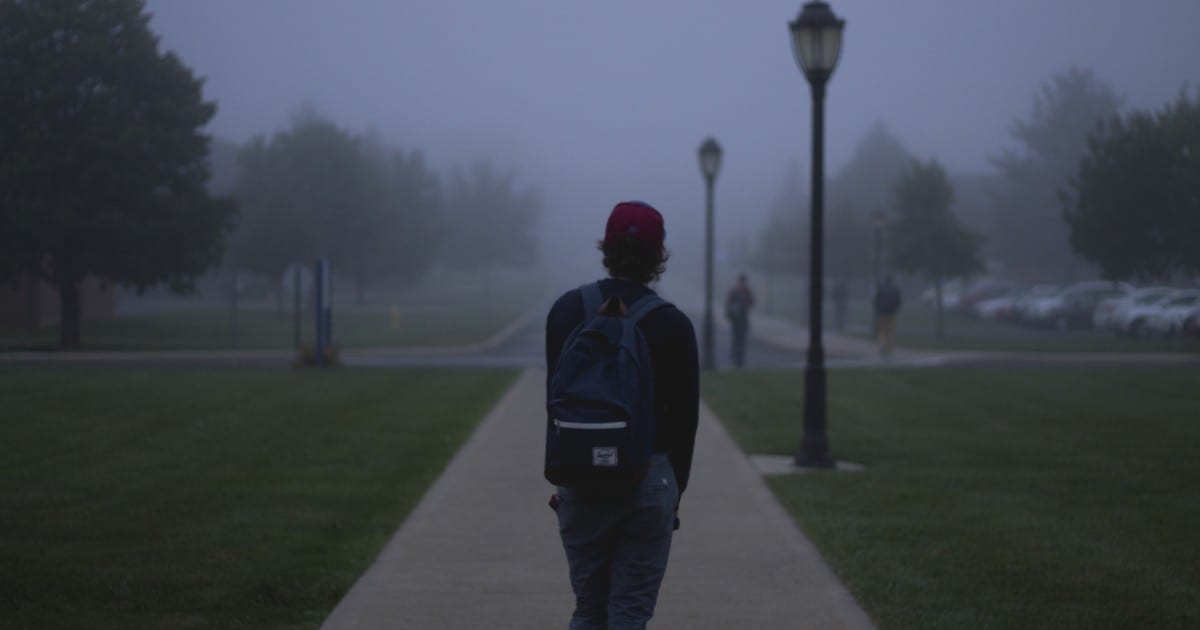Supporting the unique health needs of community college students
Of all of the initiatives aimed at closing America’s opportunity gap, one of the most reliable is — or should be — public higher education. Having established a community college system with an open door admissions policy and subsidized tuition, our country should be recording high graduation rates and producing the large number of skilled workers our knowledge economy demands.
Sadly, we are not. Only about 39 percent of students who enter the country’s most accessible institutions of higher learning will graduate within six years. At a time when even lower wage jobs require some form of secondary degree, we must explore ways to help community college students overcome barriers to completion.
The variables that impact degree completion for the 13 million students for which full-time, four-year college is not a choice or an option are numerous. Many of these factors are the very same that skew the sociodemographic composition of community college students to begin with: those associated with income, social circumstances, and discrimination. In health care, we refer to these as the “social determinants of health.”
The World Health Organization defines the social determinants of health as “the conditions in which people are born, grow, live, work and age.” These circumstances are shaped by the distribution of money, power and resources at global, national and local levels. Perhaps not surprisingly, the social determinants of health are largely responsible for health inequities..For many community colleges students, housing, food, child-care, neighborhood safety, medical problems, and poverty are significant degree deterrents.
While much has been reported about the financial and social challenges of community college students, there are few rigorous studies that describe the ways in which these health critical/non-medical factors impact their mental and behavioral health — which is to say, how associated health issues impact their degree completion and, ultimately, how better supporting the emotional and behavioral health needs of these students holds enormous promise for all stakeholders.
As a psychiatrist and a community health care advocate, I believe a multi-dimensional, socially-informed public health approach that was foundational to the community health center movement holds valuable lessons for supporting community college students throughout their academic trajectory.
High Stakes for all
Nearly half (46 percent) of all American undergraduates are community college students, an increase that grew, in part, from the great recession of the late 2000s. Of all Hispanic undergraduates, 57 percent are attending community college, as are 52 percent of all Black undergraduates. This degree path is either a stepping stone or an end goal for the majority of all college students of color. For those of us working to turn the tide of racial inequity in this country, access and completion of higher education is the social justice issue of our time.
The profiles of community college students range widely, from “not-quite-ready-for-college” teenagers and cost-conscious degree seekers to workers struggling to increase their wages and young adults on their own looking for a ladder up. Community college systems also vary greatly, with some schools, particularly in the Southwest and Southeast, rivaling private, four-year institutions in course offerings and campus settings.
Many community college students share profiles with their four-year peers but, in the aggregate, the average community college student is “non-traditional” – older than 24, of lower income, and with other competing priorities such as jobs, children, and/or dependent families. For these students, community college holds the promise of a skilled job, a higher wage, and a better life. For employers, community and vocational colleges are the pipeline for skill-ready workers who can fill the jobs left by the aging baby boomer generation.
Greater need – fewer resources
According to the American College Health Association, the prevalence (and/or reporting) of mental illness on all colleges campuses in this country has never been higher, prompting administrators and college health professionals to consider new strategies to support students as they navigate the stresses of their journey through to graduation. While there are less data available on the mental health needs specific to community college students, researchers found higher rates of some psychiatric disorders in minority college students in “Mental Health in American Colleges and Universities: Variation Across Student Subgroups and Across Campuses”. The authors of this study also emphasize the risk factors associated with students of lower income, noting “current and past financial struggles were generally associated with a higher risk for mental health problems including anxiety and depression.”
According to the Psychiatric Services study “Factors Affecting Mental Health Service Utilization Among California Public College and University Students”, which was conducted at 39 California colleges and universities (both four- year and two-year schools), “19 percent of students reported current psychological distress in the past 30 days, and 11 percent reported significant mental health-related academic impairment in the past year.” The study also found students on campuses with a formal network of mental health clinics were more likely than students at community colleges to receive mental health services. It also noted that for students who do not receive treatment, mental health problems are likely to persist, resulting in lower academic achievement and graduation rates, higher substance misuse rates, greater social impairment, and lower post graduate workforce participation and income.
In “Too Distressed to Learn? Mental Health Conditions among Community College Students,” Sara Goldrick-Rab makes the case that the students who most need mental health services are least likely to utilize them — and, unfortunately, least likely to have them available. In her report, she found that 58 percent of four-year colleges and universities have on-site psychiatric facilities appropriate for treating mental illness, compared to just 8 percent of community colleges. Further, she notes “students with multiple factors for poor mental health, such as food and housing insecurity, are more likely to attend a community college rather than a four-year college or university. Thus, community colleges have fewer resources along with a student population with higher needs, which may contribute to low graduation rates.”
While additional data could add to the scientific argument, many on the ground wholeheartedly agree with the paradox. Lane Glenn is the President of North Essex Community College in Haverhill and Lawrence, Mass, areas north of Boston known as “gateway cities” for their large number of immigrant populations. He says challenges in the mental health area have grown so significantly over the last ten years that institutions like his, which had phased our mental health services, are slowly reestablishing them.
“It’s the nature of community colleges, because we’re open door institutions, to accept and provide services to a greater range of students – low-income, veterans, first generation Americans, but also students who are less prepared for the academic experience, students with disabilities, and students facing numerous basic life challenges.”
Community Solutions
Increasing social service and mental health resources at community colleges is undoubtedly part of the solution to addressing the high demand for these services at two-year schools. But trends in public higher-ed financing overall signal that this can’t be the only approach. Innovative, collaborative efforts to addressing these social determinants of health are emerging on community college campuses throughout the country. Triage-like services such as Single Stop, a program dedicated to helping students navigate money and housing problems at a community college in New York City, is one example. And community organizations like Health Care for All, a non-profit organization connecting students to affordable health care coverage, are becoming more prevalent.
Access and utilization of mental health services remains challenging. The Psychiatric Services study found that while community college students remained significantly less likely to receive [on-site] mental health services compared to their four-year peers, there was substantial use of off-campus services among this group, possibly because community college students predominantly reside off campus and have easier access to community services or because of the absence of a formal system of mental health services on community college campuses. In either case, their findings underscore for colleges and universities the importance of developing solid collaborative relationships with community-based organizations that can help students when they need it.
“Having a network of community partners is key,” said Lane Glenn. “But it needs to be a real partnership. When it’s just a staff member handing a phone number to a student, they rarely do it. But when it’s one of our folks making the connection with someone we know in the community, they are more likely to follow through.”
Community health centers (CHCs) may be natural clinical partners for community colleges. Founded in Massachusetts in 1965, the federally funded community health center system provides affordable, accessible, and coordinated care for underserved communities throughout the country. They are responsive to the social needs of their patients, and understand the complexities of improving health in their communities.
Their model of care has always been patient-centered. Increasingly, CHC’s have moved forward on integrating primary care and behavioral health care, building on an infrastructure informed by the social, linguistic and cultural needs of their patients. While focused on chronic disease management, they embrace public health principles, with a goal of disease-prevention and wellness-promotion.
“We propose that formal clinical relationships between community colleges and community health centers are an untapped opportunity meriting broad consideration,” says James Hunt, the President and CEO of the Massachusetts League of Community Health Centers. “Health centers nationwide are the key to providing high quality community-based health care in our country. While there have always been relationships between Community Health Centers and Community Colleges around workforce development, the idea of creating formal linkages that are focused on clinical care is intriguing — it could be a win-win. CHCs are the right place for these students, and identifying their medical and behavioral health problems at early stages, and engaging them early in health-promoting behaviors — in the context of their real lives and neighborhoods — has promise.”
Alex Keuroghlian, MD, MSc, a psychiatrist and Fellow at the Kraft Center for Community Health Leadership is keenly aware of the mental health needs of minority populations. He believes that addressing structural risk factors (unstable housing, food insecurity, gender discrimination) is integral to providing comprehensive mental health care. “We need partnerships in place to make it easier for people who are struggling on multiple fronts — and we need providers who understand the interplay between social and clinical needs.”
For community college students, the community is their campus and their home. Community health centers are a natural venue for their health and mental health care as well. Now serving 24 million people nationwide, this health delivery infrastructure is likely proximate to many community colleges and equipped to provide clinical care, address social need and help students move towards wellness. It is time we dedicate thought and resources to support community colleges and local health centers, develop such partnerships, and determine the necessary ingredients for success. Our non-traditional students deserve nothing less.




